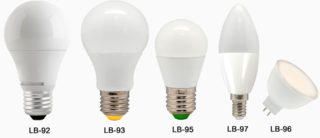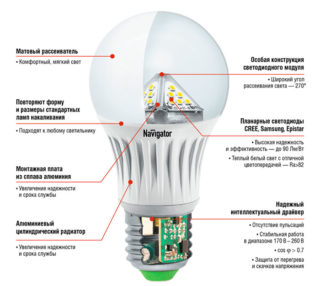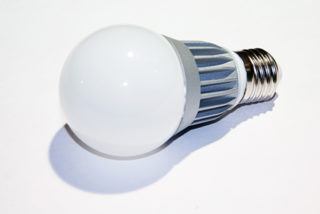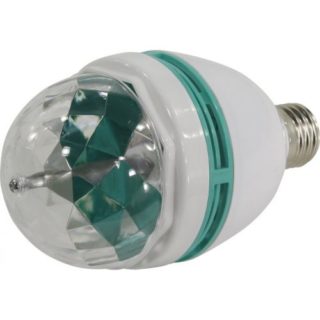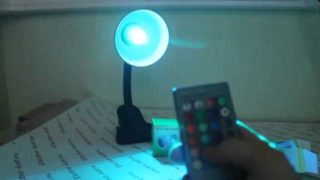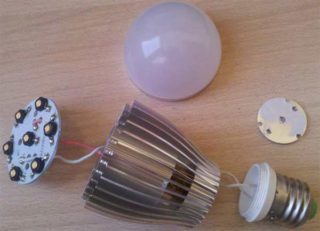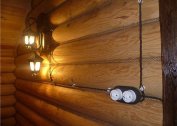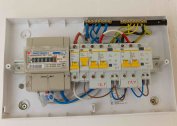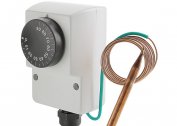More and more users are striving to replace classic incandescent bulbs with energy-saving ones. Given that with an increase in demand, a decrease in cost occurs, LEDs become available to the mass consumer. How to choose the optimal LED light bulbs for the home, save money on electricity and provide a comfortable light, you must decide before the purchase. Otherwise, there may be problems with wiring and lighting.
The principle of operation and the arrangement of the LED lamp
For the operation of the devices, a more complex scheme is used than in standard Ilyich lamps. After applying an electrical impulse, the chemical elements of two dissimilar substances are activated, and at the moment of their contact, a glow occurs.
The main nuance of the interaction scheme is that the materials used are not full-fledged conductors of electricity, but only semiconductors. Current is passed in the right direction only if the active elements of each substance are connected. In addition to the generation of light, the interaction of substances contributes to other processes, for example, heat generation.
The appearance of LED bulbs resembles a classic incandescent lamp. But the components are somewhat different. A standard LED lamp is assembled from the following elements:
- diffuser;
- Light-emitting diode;
- radiator;
- driver;
- contact base.
Conventional LED devices can not work with a household voltage of 220 V - the lamps instantly burn out. To correct the situation, additionally install power supply and control units (microcircuits), which can reduce the voltage and rectify the direction of the incoming current.
LED lamp benefits
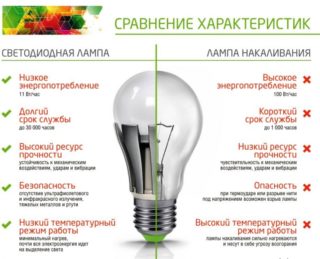 LED lamps have a number of indisputable advantages, thanks to which users change the usual incandescent bulbs for them. These include:
LED lamps have a number of indisputable advantages, thanks to which users change the usual incandescent bulbs for them. These include:
- high brightness of lighting;
- low power consumption;
- low sensitivity to differences and frequent on / off.
The best LED bulbs for the home have each of these advantages in full. But manufacturers every year release new models of devices with additional features and innovative solutions.
Types of LED Bulbs
To choose an LED lamp, you need to familiarize yourself with the basic classification and key differences of each variety.
Standard
Classic models with a power consumption of 30-40 watts, but the average value is about 5-12 watts. The devices work for a long time, under certain conditions they can last more than three years. A distinctive feature - in the process of work they practically do not emit heat, therefore they do not pose a danger to fusible materials around.
There are no harmful fumes (such as mercury) inside the glass bulbs of such bulbs. There is no fragile filament, so the mechanism will not fail due to shaking. An additional advantage is the variety of shapes, sizes and styles of lamps.
RGB lamps
The abbreviation is formed from the first letters of the three color names in English - red, green and blue. Bulbs with this mark can shine in any shade, which are composed of three main ones (red, green and blue). There are no other differences with RGB bulbs. For domestic premises it is used only for decoration - they cannot shine with ordinary light.
Rechargeable
The main difference between the lamps is the presence of a battery. These devices are of two types:
- work from the network, switch to the spare unit in case of a power outage;
- completely autonomous, shine only from the feeding element.
Rechargeable lamps respond well to aggressive climatic conditions, for example, sudden changes in temperature. They work on average from three to five years.
LED lamps with remote control
They are considered the most comfortable to use. The remote control works via infrared or radio signal. An additional control device helps to solve several issues - adjust the brightness of the glow, turn on / off the circuit remotely, activate some programs (rhythmic or color flicker).
The main disadvantages include the high cost of light bulbs, the complexity of installation and the appearance of another remote control in the room. Otherwise, the lamps are economical, shine brightly, and work for a long time. In addition to the remote control, they use Wi-Fi - special models for the "smart home" technology.
Options for choosing a LED lamp for the home
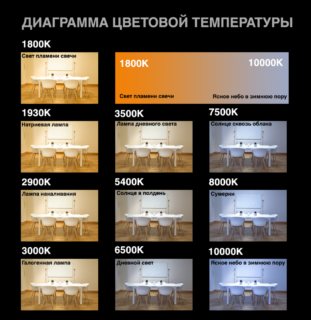 To choose an LED lamp, you need to know the basic characteristics of the devices and the electrical network. Only correctly selected products will work for a long time and really save energy.
To choose an LED lamp, you need to know the basic characteristics of the devices and the electrical network. Only correctly selected products will work for a long time and really save energy.
Power and Luminous Flux
The power of the LED lamp indicates how much electrical energy the lamp consumes. Most consumers, when replacing Ilyich’s devices, primarily focus on this indicator.
When buying, you must be guided by specially developed relationships and tables. The values of power and other characteristics can vary significantly with the same external indicators.
For example, a 100 W incandescent lamp corresponds to a 12 W LED bulb. Therefore, before buying, it is better to check the indicators several times.
The luminous flux level shows how bright the light emitted from the bulb will be. On the packaging, this is rarely indicated even by the best manufacturers.
Colour temperature
The value is expressed in Kelvin and shows the hue of the glow of the bulb. LED devices can be purchased with warm or cold light. The higher the digital designation, the more the indicator is closer to the daily level. Below the light is warm, closer to the flame of a candle. Natural white light is indicated at 4200K (plus / minus).
Base Type
A socle is a part that allows you to commute a light bulb with an electrical circuit and fix it in a cartridge. There are a large number of sizes and diameters, but several are suitable for domestic use:
- E14 - “candle”, “minion”;
- E27 - a standard light bulb, most of the products are manufactured in this embodiment;
- E40 - an enlarged base for street lighting.
Lamps marked with the letter G are analog, suitable for replacing halogen, tubular and other types of bulbs.
Dispersion angle
The indicator will help you navigate the area illuminated by the bulb area. The greater the value, the greater the seizure of the territory. 30 ° lamps work like a large flashlight, rarely suitable for home (if only in a narrow corridor or bathroom). 90 ° bulbs are used in large rooms and outdoors.
The presence of a radiator
Radiator - an aluminum cuff between the base and the bulb of the LED bulb. He is responsible for the removal of excess heat, thereby extending the life of the lighting equipment. The absence of this element or the replacement of it with a decorative plastic nozzle is the first sign that before you is a fake or just an illiterate designed light bulb that will not last 3-5 years.
Dimming capability
Dimmers are small devices that allow you to control the brightness of the lamp.The device of a classic LED lamp does not include additional regulators and cannot work with them - a small voltage with minimal lighting will not start supplying electric current to the LEDs (an obstacle is the built-in drivers).
The solution was to create special dimming LED lights, the operation of which is provided by a modified driver (board inside the device). The package must bear an indication that this lamp can work with dimmers.
Dimming occurs by controlling the frequency of the glow, which inevitably causes flickering and pulsation on the lamp. It is possible to exclude the appearance only by completely abandoning the use of dimmers.
What parameters should be considered
To select a LED lamp for the home, it is necessary to take into account several parameters that provide comfortable lighting in the living room:
- Color spectrum - lamps with a yellow tint of the emitted stream are suitable for residential premises, the color temperature for recreation areas should be 2700-2800K, for the desktop - with warm white light and a temperature of 3000K; voltage spread - 110-230 V.
- To preserve the natural colors of all objects in the room, LED lamps with a color rendering index of 80 CRA are chosen.
- Depending on the location of the lamp, directional or diffused light may be required. These effects depend on the scattering angle, which can range from 30 to 360 °.
- Only lamps with a pulsation range of 5-15% will be imperceptible flicker.
Also, when choosing lamps for residential premises, it is convenient to use the SNiPa recommendations regarding lighting standards (lm / sq.m):
- bedroom, kitchen - 150;
- children's room - 200;
- toilet, bathroom - 50;
- office - 300-500.
It is important to consider the manufacturer. The most reliable brands are considered from Europe, Japan. The cost is higher than Chinese, but the likelihood of fake and purchase of low-quality products is much lower. The best on the market are Philips, Nichia, Osram.
